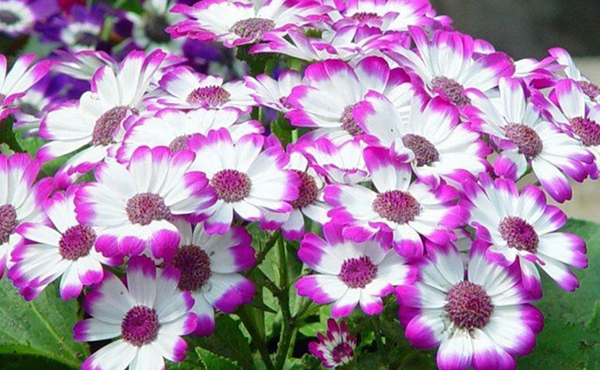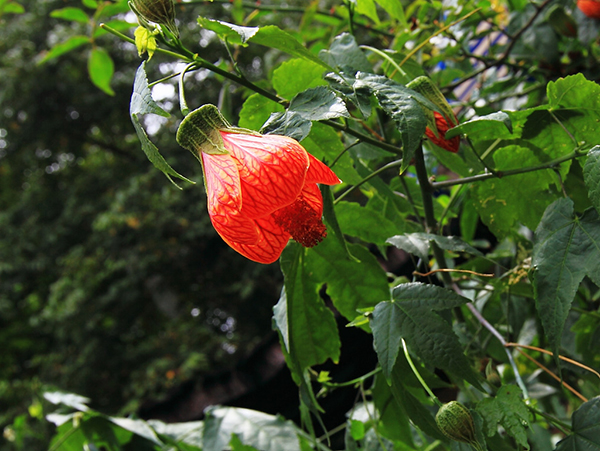Culture method of Dragon Bone Flower

The breeding method of keel flower is very simple, so many people choose to cultivate keel flower. Keel flower is a lazy flower, it is Euphorbiaceae Euphorbiaceae succulent plant, native to Namibia. Keel flower, also known as Triangle King whip, keel flower growth is robust, up to 2 meters to 3 meters high, tender meat. Watering water once a month during the winter dormancy period will not dry to death. The keel flower has a short trunk at the base, whorled around the trunk, 3-4-angled, with hard short spines, growing vertically upward.
Keel flower is resistant to drought and should be watered properly. If the pot soil is too wet for a long time, it will cause rotten roots. Watering water once a month during the winter dormancy period will not dry to death. Keel flower is not cold-resistant, the overwintering temperature should be controlled at about 10 degrees. If the dragon bone flower is not strict with the soil, the general cultivated soil can grow well. Keel flowers are generally propagated by cuttings. Cut more than 10 cm of branches, wash the slurry, dry it with plant ash and insert it into the micro-dry coarse sandy soil. A week later, a small amount of water is watered when the filth begins to lose water and wilt. Just put it in a semi-shade, it's easy to take root.
The keel flower for indoor viewing should be placed close to the sunlight window as far as possible, so that it can see more sunlight. In order to make it grow well, light fertilizer is applied every 15 days or so during the growth period. But the use of fertilizer should not be too thick, so as not to cause fertilizer damage and lead to rotting roots. In order to prevent the keel flower from rotting in winter, it is necessary to put it in a sunny place to see more sunlight.
Is the dragon bone flower poisonous?
Keel flower is a more common flower in the family, breeding in the room is conducive to purifying the air, keel flower can absorb formaldehyde, ether and other toxic and harmful gases produced by decoration. And relatively easy to breed and manage, unique shape, deeply loved by the masses. Next, the editor introduces the method of keel flower culture and is it poisonous?
Culture method of Dragon Bone Flower
1. Soil requirements
Dragon bone flower likes fertile and soft soil. In pot cultivation, one part of rotten leaf soil and one part of coarse sand can be mixed, and then a small amount of chicken manure or cow manure can be added to the culture soil.
2. Temperature condition
It needs to be maintained in semi-overcast environment in summer, sufficient light in winter, placed in the sunny place indoors, and the temperature should be kept above 12 ℃. Freezing injury is easy to occur when the temperature is lower than 12 ℃.
3. Lighting conditions
The keel flower needs to be shaded in summer, which is more conducive to growth. For indoor keel flower, it is best to put it near the daylight window to absorb more sunlight.
4. Watering method
It is not appropriate to water too much in spring. Water should be watered every half a month, but spray water to the plants every day to increase air humidity. It is best to water the plants every morning or evening in summer.
5. Fertilization method
The keel flower should be fertilized every 15 times during its growth, and the fertilizer can be used either with granular compound fertilizer or self-made alum fertilizer. But don't fertilize too much to avoid causing fertilizer damage and rotting roots.
6. Pruning and shaping
In order to prevent the keel plant from aging prematurely, it is necessary to prune in time and cut off some non-flowering branches so that the new buds can be fully developed and elongated.
Is the keel flower poisonous?
Dragon bone flower can not only play a role in transforming evil spirits, but also has a good purification effect. For newly decorated houses, it has a good adsorption effect on formaldehyde, stupid, ammonia and TVOC. However, when the keel flower is planted indoors, you should pay attention to it, because there are sharp thorns on the fleshy stem, and the white milk in the stem is poisonous, especially not into the eye, so you should pay special attention to the location when you cultivate it at home, so as to avoid stabbing and poisoning in children and the elderly.
About the keel flower culture methods and keel flower poisonous? this is the introduction here. I hope it will be helpful to everyone.
How to raise keel flower culture method
The dragon bone flower is a plant of the genus Cactus. Keel climbing succulent shrubs, 3 Mel 15 m long, ribs often winged, margin undulate or crenate, dark green to light bluish green, glabrous, margin of old branches often callose, light brown, bony; areoles arranged along ribs, 3 Mel 5 cm apart, ca. 2 mm in diam. Keel epiphytic succulent plant with large white fragrant flowers blooming in the evening from May to September. So how to raise the dragon bone flower? Let's take a look.
1. Basic information of Dragon Bone Flower
Dragon bone flower, also known as "measuring ruler". It's a succulent shrub of the cactus family. Dragon bone flower likes warm, humid and semi-shaded environment, can withstand drought, is afraid of low temperature and frost, and the overwintering temperature should not be lower than 7 ℃ in winter, otherwise it is vulnerable to frost damage. It is better to use sandy loam rich in humus. It is 15 meters long and has air roots. Guangdong, Hainan, Guangxi and other areas can be cultivated near gardens or villages, often climbing on tree trunks, waste walls or rocks, and their stems are often used as grafting rootstocks for all kinds of cactus. The keel flower is planted in the corner and edge of the greenhouse and can be used as a fence plant and a pot plant as a rootstock for grafting other cactus plants. Distributed from Central America to northern South America, widely cultivated all over the world, wild in Hawaii; common cultivated in China, wild in Fujian, Hainan and Guangxi, climbing on tree trunks, rocks or walls by air roots.
Second, how to raise keel flowers
1, soil: keel flower does not require soil quality, ordinary soil can be cultivated, it is appropriate to use nutrient-rich, fertile sandy soil, the soil can be mixed by decaying leaf soil and coarse sand at 1:1, and then add a little mature poultry or livestock manure.
2. Light: it is suitable to grow under semi-shade conditions, although it is resistant to sunlight, but in order to avoid yellowing in strong light, shading measures should be taken in summer and placed in a place where you can see light in winter to receive a certain amount of sunlight. Indoor plants had better be placed in places such as balconies and windowsills where light can be seen.
3, temperature: the dragon bone flower likes the warm environment, is not cold-resistant, is afraid of frost, the winter temperature should be above 10 ℃ in order to survive the winter smoothly, and give the right amount of uniform light, not less than 7 ℃, so as to avoid frostbite.
4. Water and fertilizer management: water should not be watered too much in spring. Water should be watered once every 10 murals every 15 days, but water should be sprayed to plants every day to increase air humidity. It should be watered once a day in summer, preferably in the morning or evening. The basin soil should be kept moderately dry in winter, and plastic film can be used to cover the basin to protect the overwintering. The overwintering cultivation environment should maintain both high temperature and high air humidity.
5. Pruning: in order to prevent the keel plant from aging prematurely and maintain the vitality of its base, we should also pay attention to regular pruning. Cut off some old branches that are not very flowering, and at the same time remove the weak buds growing below, so that the terminal buds are fully developed, elongated, and bloom more.
- Prev

Culture method of Chrysanthemum morifolium
1. Soil: melon leaf chrysanthemum likes sandy loam rich in humus and good drainage, avoid drought, afraid of stagnant water, and is suitable for neutral and slightly acidic soil. 2. Watering: the leaves of Chrysanthemum morifolium are large and thin, and they need to maintain sufficient moisture, but they can not make the basin soil too wet, so it is appropriate to keep the leaves from withering.
- Next

Culture method of Lantern Flower
Lantern flower is fragile, although it looks very delicate and beautiful, but it can not stand the burning of the sun. Lanterns are naturally favored by the high humidity and cool environment, and the suitable temperature for growth is about 10-25 ℃.
Related
- Fuxing push coffee new agricultural production and marketing class: lack of small-scale processing plants
- Jujube rice field leisure farm deep ploughing Yilan for five years to create a space for organic food and play
- Nongyu Farm-A trial of organic papaya for brave women with advanced technology
- Four points for attention in the prevention and control of diseases and insect pests of edible fungi
- How to add nutrient solution to Edible Fungi
- Is there any good way to control edible fungus mites?
- Open Inoculation Technology of Edible Fungi
- Is there any clever way to use fertilizer for edible fungus in winter?
- What agents are used to kill the pathogens of edible fungi in the mushroom shed?
- Rapid drying of Edible Fungi

